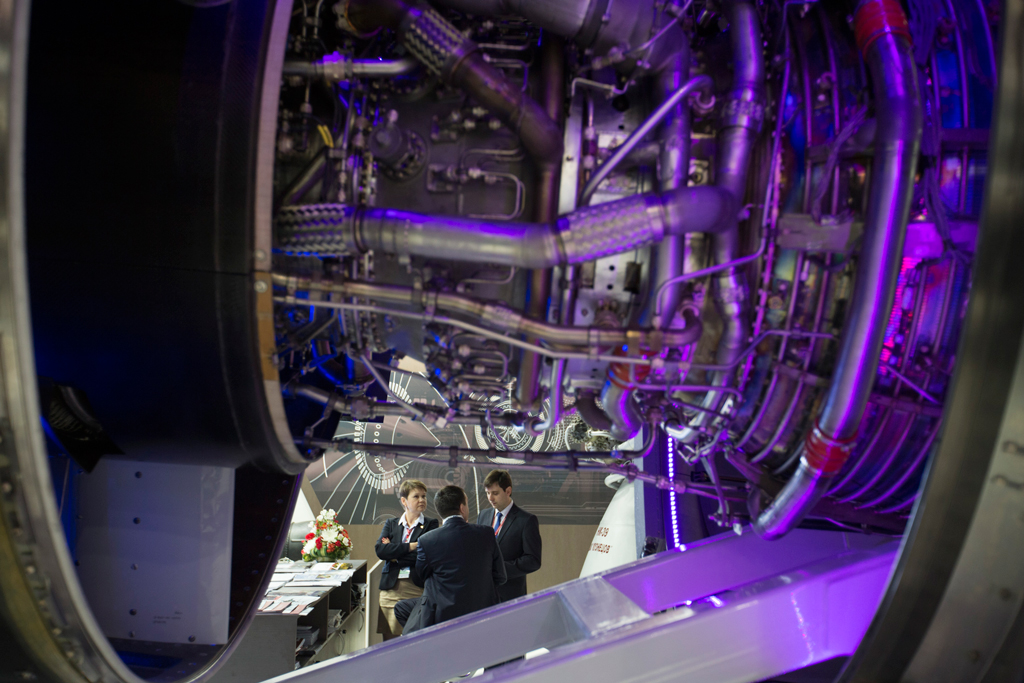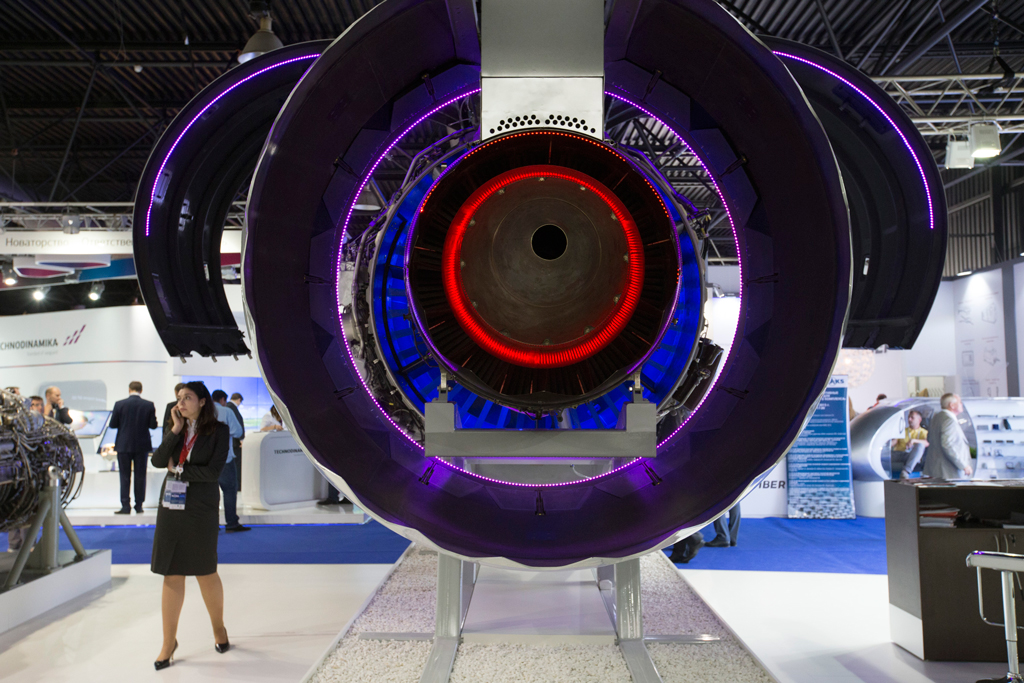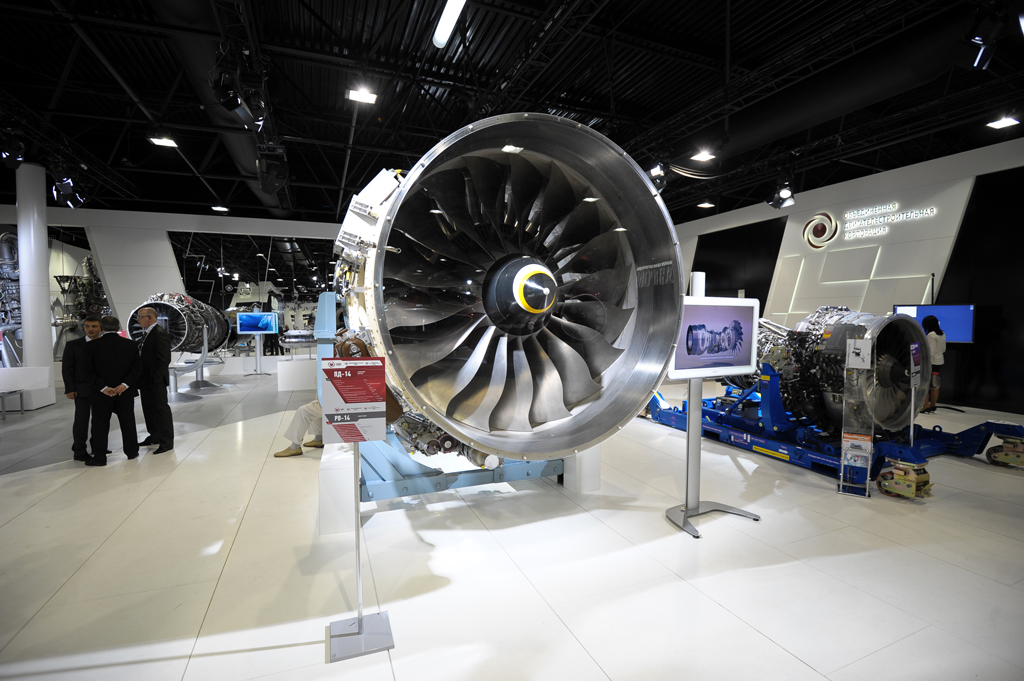.jpg)
PD-14 is the fifth generation engine, it unites the best domestic traditions with new aviation standards of the 21st century. The turbojet is the most difficult engineering device that requires very complicated design solutions. For example, one turbine blade, and there are about 70 in the levels, rotates with a frequency of 12 thousand rpm, and it is affected by centrifugal force, equal to 18 tons. For comparison, it is the same as the pressure on the suspension of the famous London double-decker bus.
1. The first aircraft engine created in Russia after the collapse of the USSR
The PD-14 project is the new page in the history of turbofan bypass engines and the first domestic development in the field of civil engine technology for the last 29 years: according to the test program of PS-90A the first flight Il-76LL took place on December 26, 1986.
PD-14 is based on a specially developed unique gas generator which includes three elements: a high-performance compressor, high-pressure turbine and low-emission combustion chamber. The unified gas generator of PD-14 allows to create traction motors from 8 to 18 tons.

2. Basic project for the engine family
Based on PD-14 engine family will allow to equip with modern powerplants practically all Russian aircrafts: from PD-7 for short-range Sukhoi SuperJet 100 to the PD-18 which can be established on long-haul Il-96.
On the basis of the PD-14’s gas generator it is planned to develop a helicopter engine PD-10B to replace the E-136 on the world's largest Mi-26 helicopter. The same engine can also be used by the Russian-Chinese heavy helicopters which development has already begun. On the basis of the PD-14’s gas-distributing installations or even gas turbine power plants with power from 8 to 16 MW can be created.
3. 16 new technologies are developed for PD-14
With the leading role of the Central Institute of Aviation Motors (CIAM), head scientific research institute of the industry, and the experimental design bureau Aviadvigatel there has been developed 16 crucial technologies for PD-14: monocrystal turbine blades of high pressure with the perspective cooling system capable of operating at a gas temperature up to 2000 °К; wide-hollow fan blade from titanium alloy which made it possible to increase the efficiency of a ventilatory step for 5% in comparison with PS-90; low-emission combustion chamber from intermetallic alloy; the sound-absorbing constructions from composite materials; ceramic coverings on hot parts; hollow low pressure turbine blades, and others.
4. 20 new material were created for this project
With the participation of the All-Russian Research Institute of Aviation Materials (VIAM) about 20 new materials were developed for PD-14. The use of composite materials in the design of the engine and nacelle and wide-hollow titanium fan blades significantly reduced the engine weight. PD-14 benefits from the indisputable advantages: reduction in fuel consumption by 10-15%, reduce life cycle cost by 15-20%; engine maintenance costs for 14-17% cheaper than existing analogues.

But to create a material is the half the battle: certification on the international standards is necessary for the use of this material in a civil aircraft engine. Otherwise, the engine, no matter how good it is, is not allowed to fly outside Russia. The rules here are very strict, since we are talking about people's safety. The same applies to the engine manufacturing process: industry enterprises need certification by the regulations of the European agency of an aviation safety (EASA). All of this is supposed to improve the production. The very of PD-14 itself took place on new digital technology, allowing already the 7th copy of the engine to be assembled in Perm on serial production technology while earlier experimental batch was produced in an amount of up to 35 copies. In general, the project PD-14 is going to keep more than 10 thousand highly skilled working places in Russia.
manufacturing process: industry enterprises need certification by the regulations of the European agency of an aviation safety (EASA). All of this is supposed to improve the production. The very of PD-14 itself took place on new digital technology, allowing already the 7th copy of the engine to be assembled in Perm on serial production technology while earlier experimental batch was produced in an amount of up to 35 copies. In general, the project PD-14 is going to keep more than 10 thousand highly skilled working places in Russia.
5. Eco-friendly and silent aircraft engine
Optimization of parameters of a thermodynamic cycle, the low-emission combustion chamber, low specific fuel consumption allowed to minimize harmful emissions into the PD-14. The achieved results the emission are lower than the established regulations for 30–45%.
PD-14 is a silent engine. 3D-modeling of aerodynamic components, the increase of the bypass ratio to switch to a low-frequency zone and the use of the latest generation effective systems of noise suppression allowed to reduce noise level considerably. Noise indicators with an essential inventory exceed regulations of the International Civil Aviation Organization.
6. First Russian aircraft 5th generation engine
Progress in engine manufacturing is characterized by several parameters, but the main is the gas temperature at the turbine inlet. The transition to each new generation of turbojets and account for a total of five, was characterized by an increase of the temperature by 100-200 degrees.

Thus, at the 1st generation of engines of the end of the 1940s temperature didn't exceed 877 °C, at the 2nd generation (the 1950s) this indicator has grown to 977 °C, in the 3rd generation (the 1960s) this parameter has increased to 1176 °C, at 4th generation engines (1970-1980s) the gas temperature has reached 1376 °C. The turbine blades of the 5th generation engine which the first examples emerged in the West in the mid-nineties, are working at a temperature of 1626 °C. Currently only 15% of the world engines in operation are the 5th generation engines.
7. PD-14 technologies are state secret
Except the domestic companies, only firms in the USA, Britain and France posses a full cycle of creation of modern turbojets technologies. Meaning there are less countries that manufacture modern aircraft turbojet engines, than the countries possessing nuclear weapons or launching satellites in space. For example, China's long-term efforts still have not led to success in this area. The Chinese quickly copied Russian fighter Su-27, however they did not manage to copy its AL-31F engine. China is still forced to buy this not the latest engine in Russia. Therefore the aircraft engine development technologies are preserved as the major state secret.
For example, long-term efforts of China didn't result in success in this area yet. Chinese quickly copied the Russian SU-27 fighter, however they didn't manage to copy its AL-31F engine. China is still forced to buy this for a long time not most modern engine in Russia. Therefore technologies of development of aviation engines are preserved as the major state secret.











